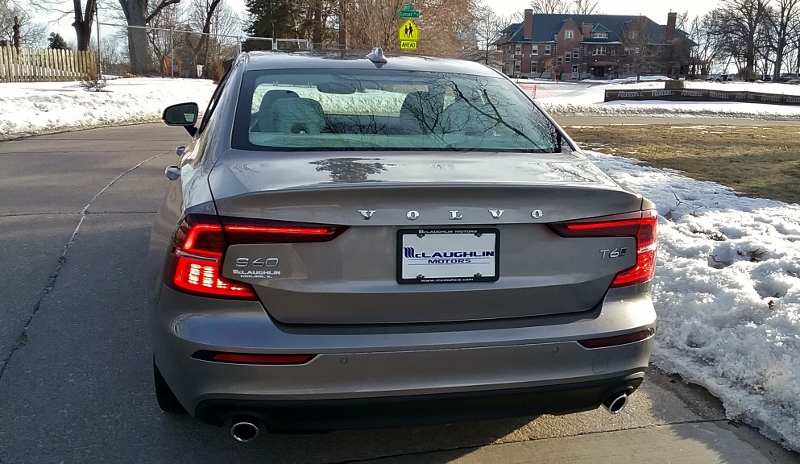
I first spotted the redesigned 2019 Volvo S60 at my local dealer, McLaughlin Motors, late last year. It was sitting right outside the showroom, finished in gunmetal gray with black interior. My salesman buddy there, Brian Cox, informed me it was the first U.S. built Volvo. Interesting. I thought the car looked pretty good too. So I knew I was going to have to try one out sooner or later.
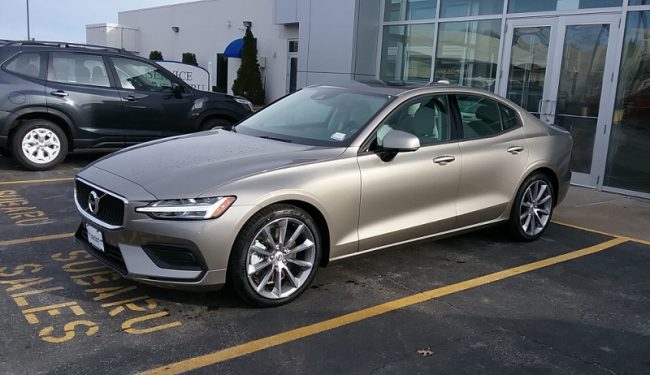
Sadly, a particularly nasty winter that didn’t really start ramping up until mid-January precluded any test drives for a while. But finally, on March sixth, Brian put me behind the wheel of a S60 Momentum, finished in Pebble Gray Metallic with an especially attractive off-white and black interior. So much nicer than the common all-black interiors, which have always reminded me of a cave. I prefer lighter interior colors; they come in handy during our Midwestern summers, too. A/C has to work a lot harder in 90 degree heat when the car’s interior is black.
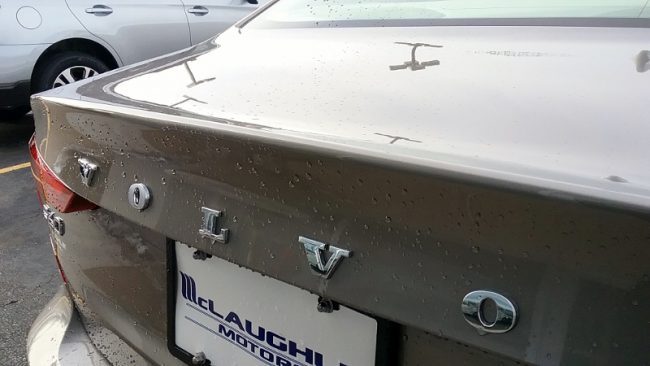
Volvos of today are not quite the Volvos of my youth. My first one was a 940SE, built in Goteborg, unapologetically boxy, with a ‘redblock’ turbo four and rear-wheel drive. Today’s Volvos are anything but boxy (including the wagons), are front wheel drive (with AWD optional), and mostly sporting various four-pot mills with direct injection.
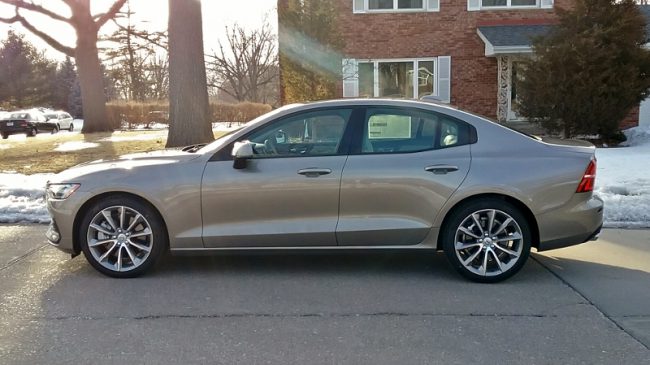
While I do like the look of the new Ovlovs and the new S60 in particular is particularly sharp, I do have a bone to pick on their model designations. For decades, Volvo’s model numbers were simple to decipher. The middle number was the engine cylinder count, and the last number was how many doors. Say, for instance, 164E. That meant a sedan, with a six cylinder engine. While a 245DL was a four-cylinder with five doors, a wagon. Later on, T5 and T6 meant a five- or six-cylinder with turbocharger.

So one could assume that the new ’19 S60 T6 had a turbocharged six cylinder, right? Nope! It is in actuality a 2.0L, lunchbox-sized four cylinder, with both turbo and supercharging, direct injection, and 316 hp at 5700 rpm. So, Volvo, why is it called a T6? Why not call it a SuperTurbo or something. Something accurate? But I digress. It’s just a pet peeve of mine, manufacturers who can’t call a car what it is. BMW is another serial offender in that regard.
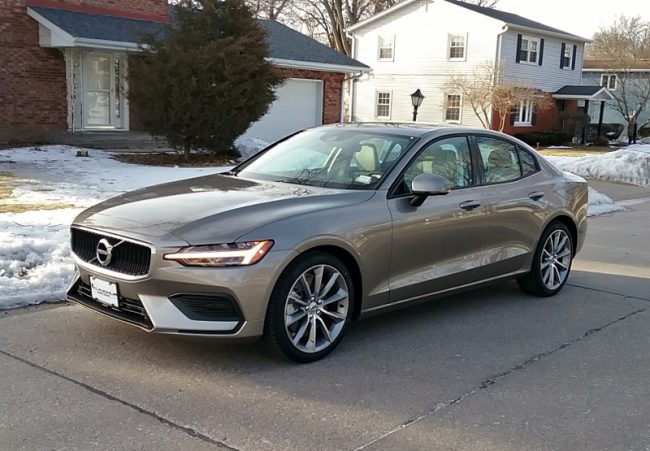
Starting with the 2019 model year, all S60s sold in the U.S. are now built in a brand-new factory in Ridgeville, South Carolina. I think this is kind of a cool move. Why? Because while I’d rather have my personal Volvo to be built in Sweden, or at least somewhere in Europe, I MUCH prefer a U.S. Volvo to a Chinese-built one. Yes, yes, I’ve heard many stories of how quality is similar to the Swedish-constructed Ovlovs. I don’t care. I don’t want a Chinese Volvo. I’ll pull the trigger on a Chinese made bucket, nail file or pair of sunglasses, but a car? Nope!
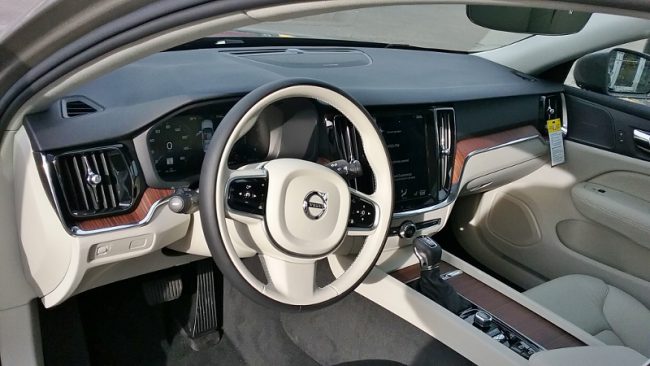
But wait Klockau, you might be thinking about now, how about telling us about the car, it’s a car review for crying out loud. So, let’s. As I got into the car, those famous Volvo orthopedically designed seats welcomed me in. Those are still a part of Volvos they haven’t yet changed, fortunately.
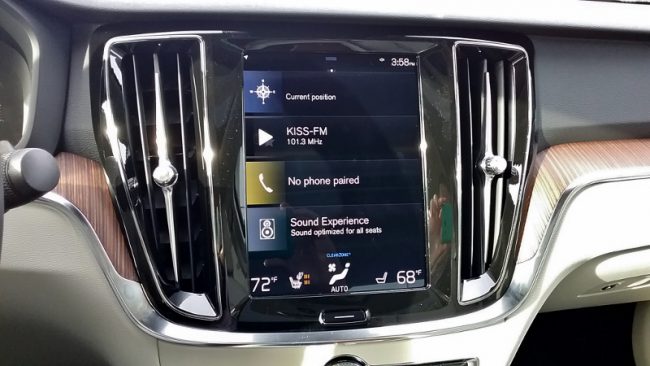
The genuine wood trim contrasted nicely with the off-white leather, black dash pad, door caps, and carpeting. There was almost a retro-’70s Cadillac/Lincoln look to the dash, with those elongated chrome HVAC vents.

As with pretty much every other ’19 automobile, it had a fob with a sensor and a start/stop knob on the center console, instead of a key. I turned it and the car came to life. This may be a four, but it was quiet. And it moves with authority, thanks to the turbocharger and supercharger. Just don’t think about how much those might cost to replace in 5-10 years, haha.
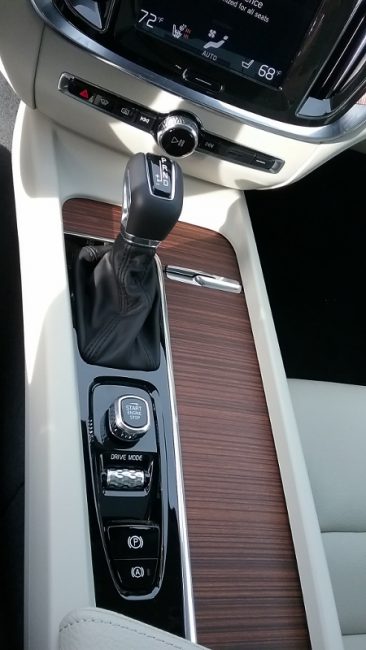
If you didn’t read the window sticker and just took this car for a spin, you likely would not peg it as a four-cylinder. It felt more like a six to me, with plenty of giddy up. As mentioned earlier, the engine produces 316 horses, in addition to 295 lb-ft of torque.
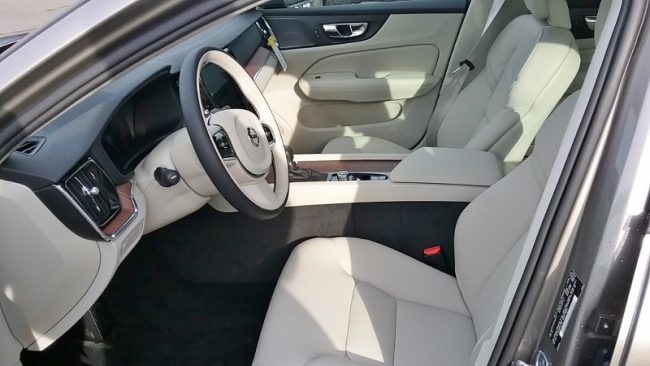
Acceleration is very good. As I took the exit ramp from John Deere Road to merge onto I-74, I almost went “Wheeeeeeee!” Yes, this is a fun car to drive.
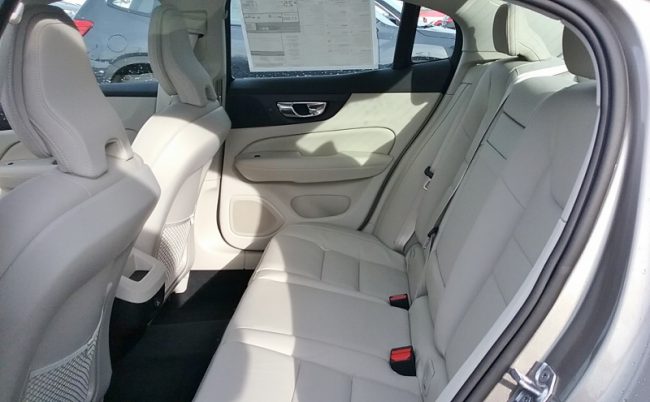
Base price on the S60 T6 AWD Momentum (how’s that for a long name) is $40,300. My test car had many additional options though, and stickered at $49,110. Extras included 19″ wheels for $800, heated rear seats and heated steering wheel for $750, and metallic paint for $645. Yes, that is correct.
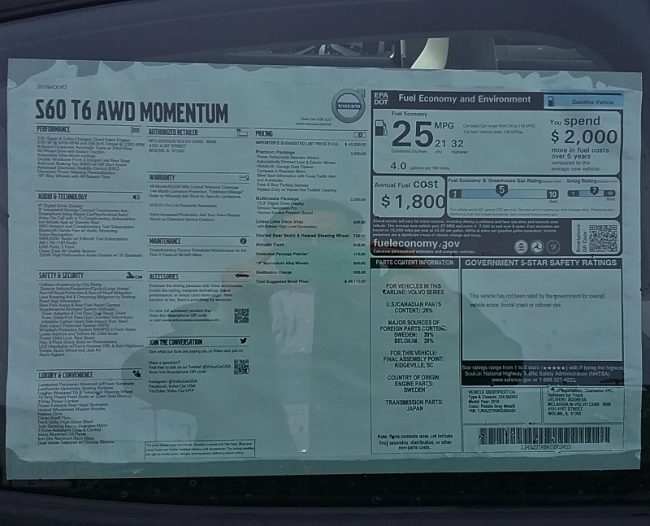
You can go down to Dahl Ford and get a metallic silver Fusion, and they won’t charge you for the paint, but Volvo (and most of the other Euro upscale manufacturers) have the gall to charge you six hundred and forty-five bucks for the pleasure. Stupid! But they’ve been playing that game for decades.
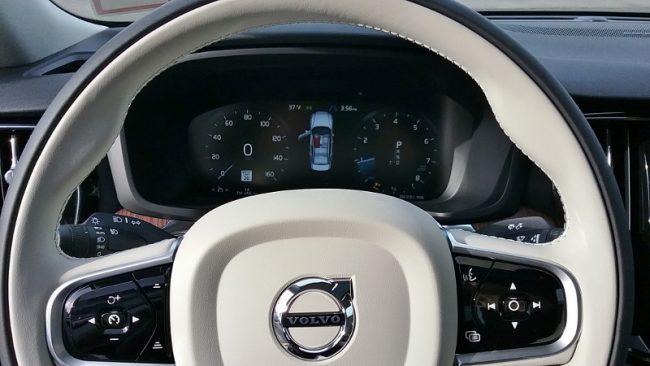
As with the Ranger I recently reviewed I drove the car both in traffic and on the Interstate. The S60 was very composed. Like the Volvos I’ve owned in the past, handling was very good, the steering in particular was very sharp.
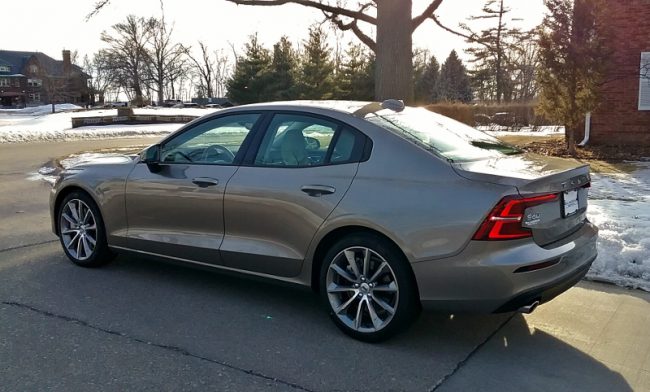
No blundering about like you would do in some overweight, under-tired crossover. Volvo may have changed a lot over the last 20 years, but it still feels like a European car. It moved with authority, sneering at rent-an-Altimas and battered Camrys going 48 in the passing lane.

And though it’s not the unmistakably boxy Volvo 740/760 so commonly seen back in the ’80s, it is a handsome vehicle. And for those in the know, the front end, particularly the grille, is a retro nod to the 1972 Volvo 1800E and 1800ES sport coupe and sportwagon. Nice touch.

So despite my lack of love for the 2.0L four cylinder taking over most 2019 motor vehicles, the aforementioned $600+ metallic paint, and my worry at the longevity of that turbo and supercharger under the hood, I still had the thought that one of these might make for a nice addition to the fleet in a couple of years, as a CPO with 20-30K miles on the clock.
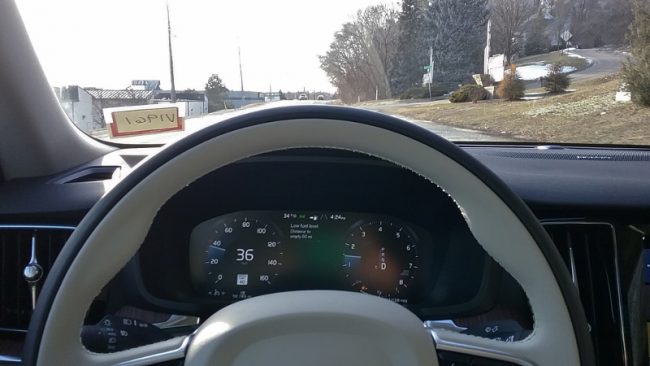
Until I discovered one thing: Premium fuel is required. Been there, done that in the past. A 2.0 four needs premium, and my 4.6 V8 runs happily all day on cheap 87 octane. So I guess I’ll stick with the Lincolns. But hey, the Volvo is a nice car. Just don’t get the metallic paint.
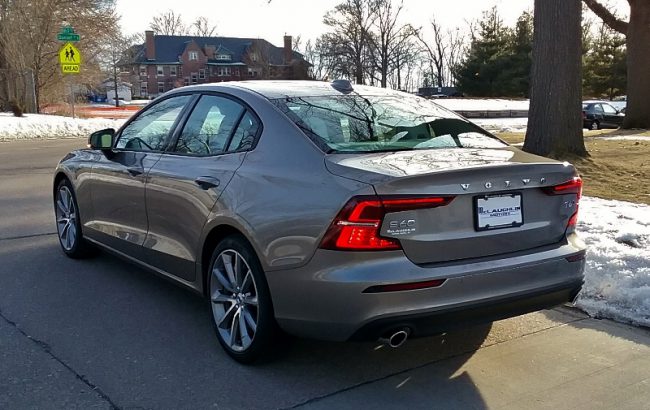
Special thanks once again to Dave Calvert, Brian Cox, and all the other fine folks at McLaughlin Volvo for the use of the vehicle.







12 Comments
The front end styling is a real shame. Oversized logo, big black plastic voids, the unendearing Thor’s hammer headlight gimmick, and I am totally mystified by the angled buttresses under the grille that give a cow catcher look but probably are meant as an homage to the ugly Lexus Predator mouth, er hourglass, grilles.
I had no idea that they were doing domestic manufacture, especially of a sedan, so that is good news.
No, the car does not “require” premium gas. This isn’t the 1970s any more. All current cars have knock sensors. If you put non-premium gas in the car, under high load conditions (and high turbo boost?) the ignition timing will be retarded by the engine controller, reducing maximum power a smidge, and POSSIBLY reducing fuel efficiency a bit. You can run non-premium gas in a modern car for 200,000 miles and it won’t hurt it one bit. And if you really think you can tell the difference between 315 peak HP and – what? – 280? in a four door sedan driving around on city streets and highways, you’re fooling yourself.
As one data point, I ran a controlled test on my 2009 S60 which also has an owner’s manual that “recommends” premium fuel. I tracked carefully my fuel economy over a year running premium and then a year running regular unleaded (to take out seasonal effects). In my life of mixed-mode driving – city, urban freeway, long interstate drives – there was exactly ZERO difference in gas mileage. (I know how to do statistical analysis. There was ZERO difference.)
Obviously, since I don’t have a dynamometer in the garage, I couldn’t assess the effects on the power and torque output of the engine, but even that older model with its mere 250 or so HP has never had the least bit of trouble supplying me with all the acceleration I have ever needed.
The owners manual has changed from the old models and does no\w say required not recommended for premium. I too got by fine on regular in older fwd Volvos. On my 18, I use premium, think the new design engine is under a fair bit of pressure to produce all the horsepower and torque with so little displacement.
Yes, that’s why they fit them with knock sensors.
The car will NOT be damaged by using regular unleaded.
I would wager, friend jc, that if someone’s new Volvo S60 T6 (supplied with an owners manual that states “premium required”) dropped a valve or holed a piston during the warranty period that the friendly folks at Volvo would sample the fuel tank and fuel system, determine the presence of non-premium fuel, and deny any and all warranty claims made for engine damage regardless of causality. I would also wager that Volvo is able and willing to afford more attorneys-at-law to win this issue than the average Volvo owner would be able to afford.
Regarding engine damage from using lower octane fuel…..
This engine is both turbo AND supercharged.
With a simple turbo system it’s pretty easy to limit boost electronically in order to avoid detonation due to poor quality fuel. You would ALSO retard engine timing to help prevent detonation.
However with a supercharger it’s very difficult to limit how much air is forced into an engine as it is directly driven by engine rpm.
So while you still have the ability to retard timing you DO NOT have the ability to alter how much air pressure is fed into the engine.
The concern I would have using regular in this engine is that the compression may be high enough that detonation occurs even with retarded timing. The other concern is that loading an engine with retarded timing can seriously create heat especially in the exhaust system.
And a super hot exhaust gets expensive these days as turbos and catalytic converters aren’t cheap.
Now a 10 year old vehicle wanting premium is a much different animal. They could certainly just lower boost and pull the timing back a bit. And if you weren’t pushing it it would be fine.
But let’s face it. These engines are engineered to the max basically. Any skipped maintenance or improper treatment will likely get very expensive very fast
I’ve read reports in rare instances issues with GMs 2.0t used in various cars. I was looking at the regal with that engine but ended up with the Mazda 6 with the 2.5t.
I’ve used both.premium and regular, and I’m seeking a 2mpg increase with premium fuel. I know the car reduces hp with regular but it also gets less fuel economy it seems too.
Volvo had a good thing going with the boxy look. The boxy 850 was really just as aerodynamic as the full areos but time moved on. Both with the 99-01 S80, S60 and now again with the post 2016 Volvos, Volvo has distinctively Volvo shapes that are fully modern. Peter Horbury is a genius. He is also an Englishman. It is ashamed that the demise of British car makers did not allow him to use his talents for his own country. Now people like Horbury have to hold their nose and sell their services to the highest bidder.
This is such a great looking car. As are all Volvos these days. Didn’t realize it was made in the USA.
So Tom, given your longing for the more logical naming scheme of years past, were the subsequently mentioned 1800 models 80 cylinder, 0 door cars, or 8 cylinder, 00 door cars?
It was initially 1800cc, or 1.8L, for the engine. It was later enlarged, but Volvo kept the 1800 designation, probably for the same reason they’re still calling the 2.0 four in the S60 a T6: customer recognition.
Although the new Volvo naming scheme really didn’t appear until the 140 Series in about 1966; the 1800 preceded it in ’61, when the Amazon was also referred to as the 120/122 in export markets, so maybe it was grandfathered in due to name recognition.
“Momentum”. Sigh.
Was it Land Rover who started the ridiculous naming system with their Range Rover “Autobiography”? Now Volvo has “Momentum”, Jaguar has “Portfolio”, Audi “Prestige” and I’m sure there are a lot more. It’s all a bit embarrassing, really, like what people imagine rich people like.
Momentum on Volvo is the base model. The fancy interior is called Inscription. Par for the course when building for the world (China) market, which all makers are guilty of.